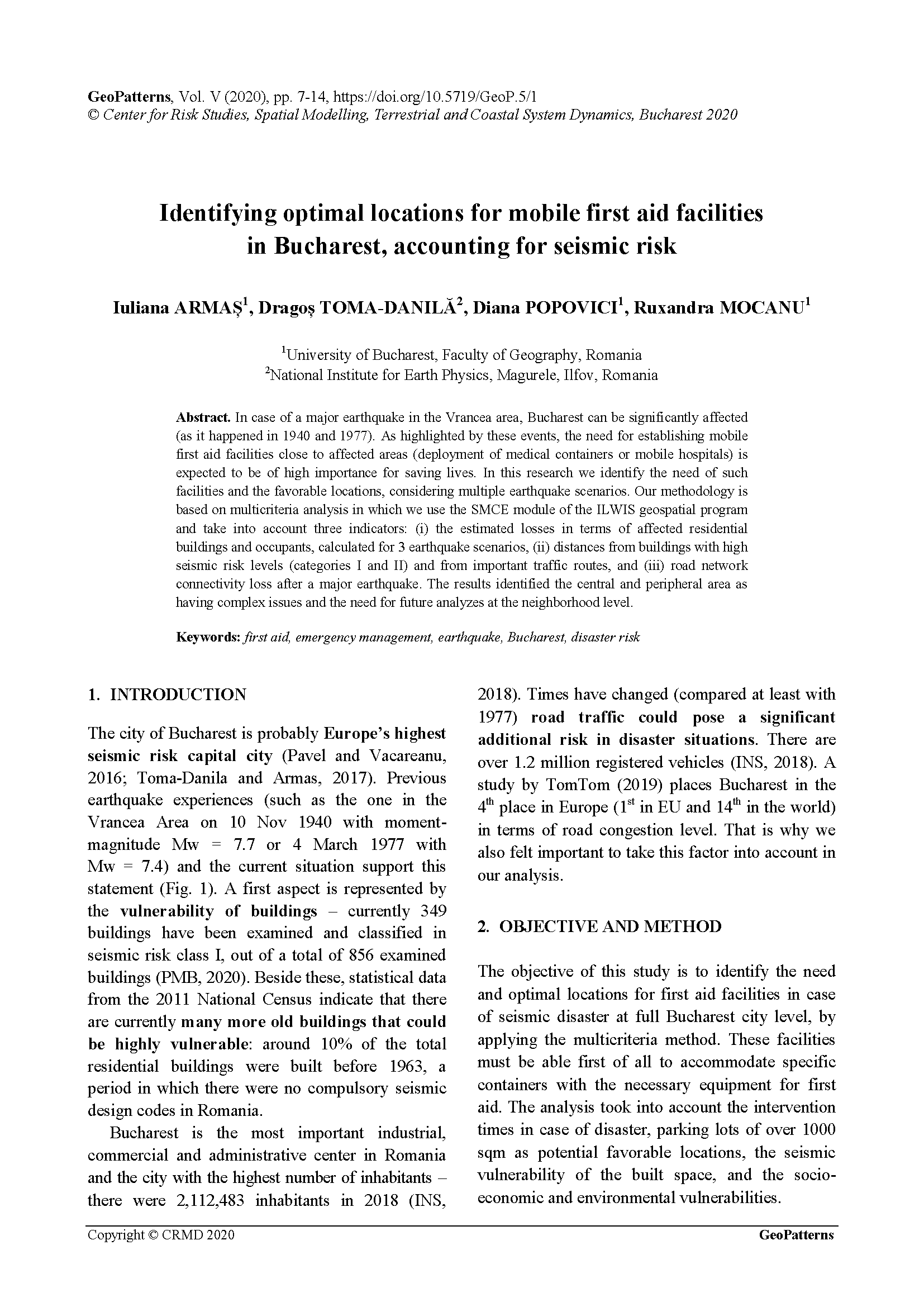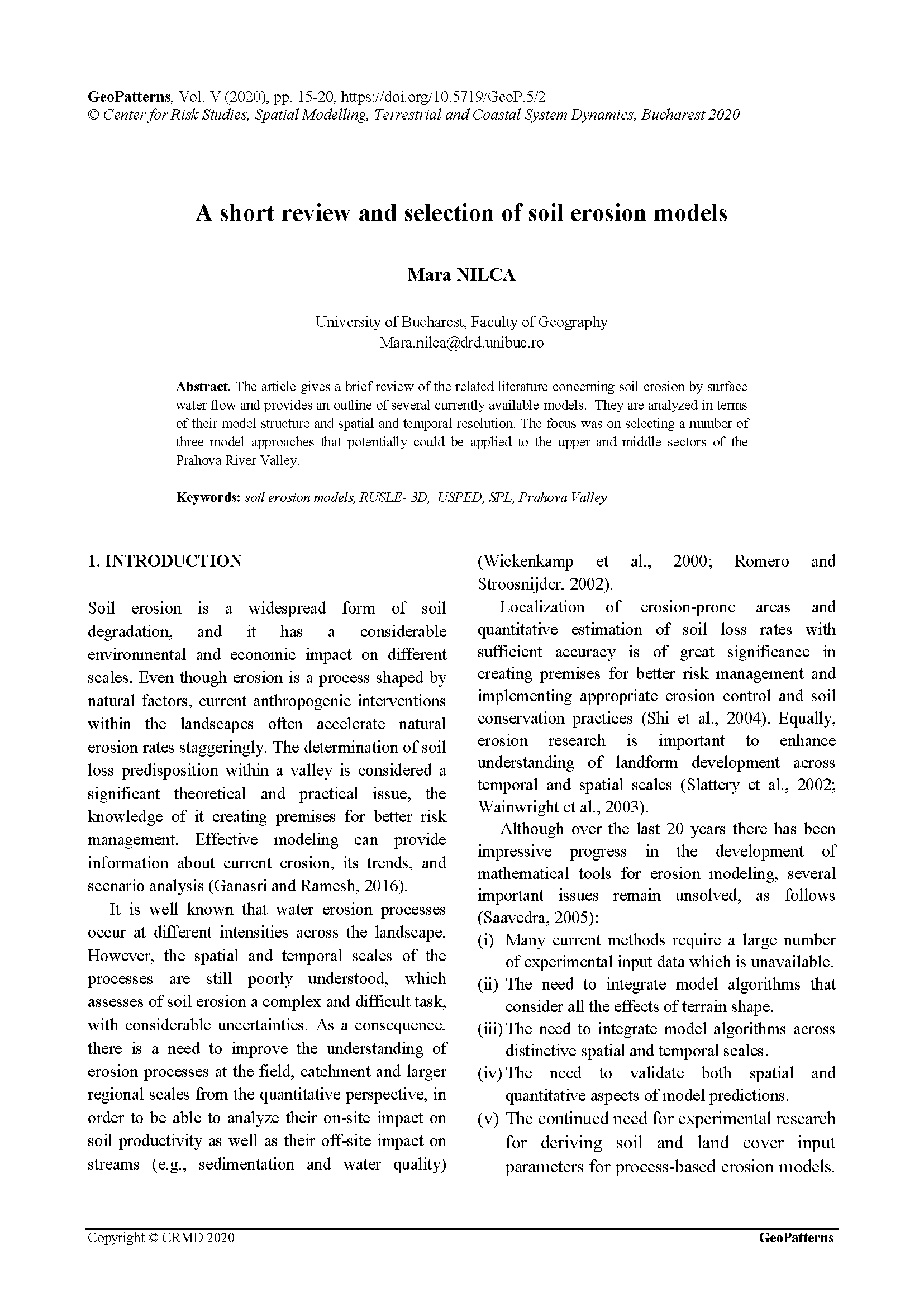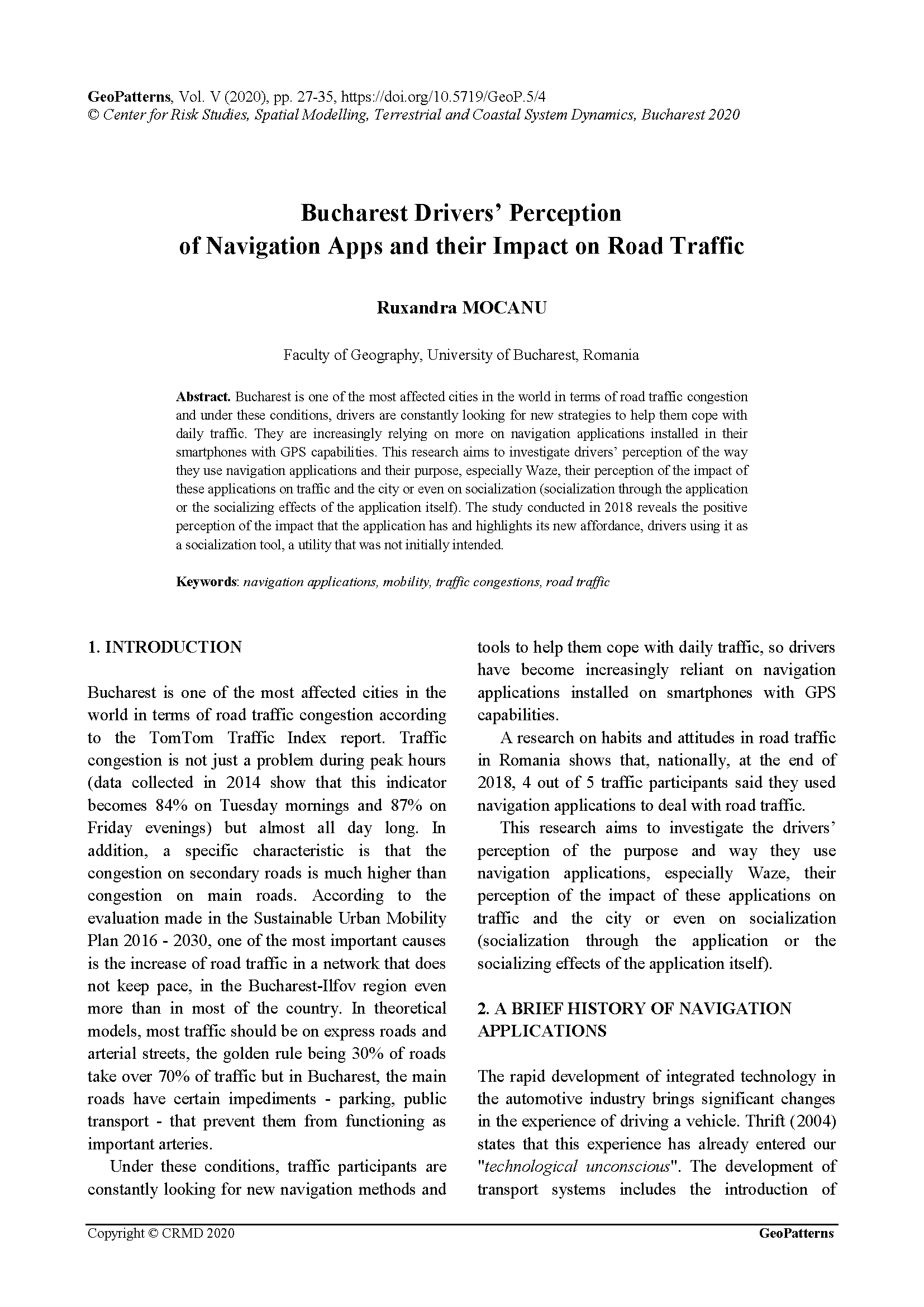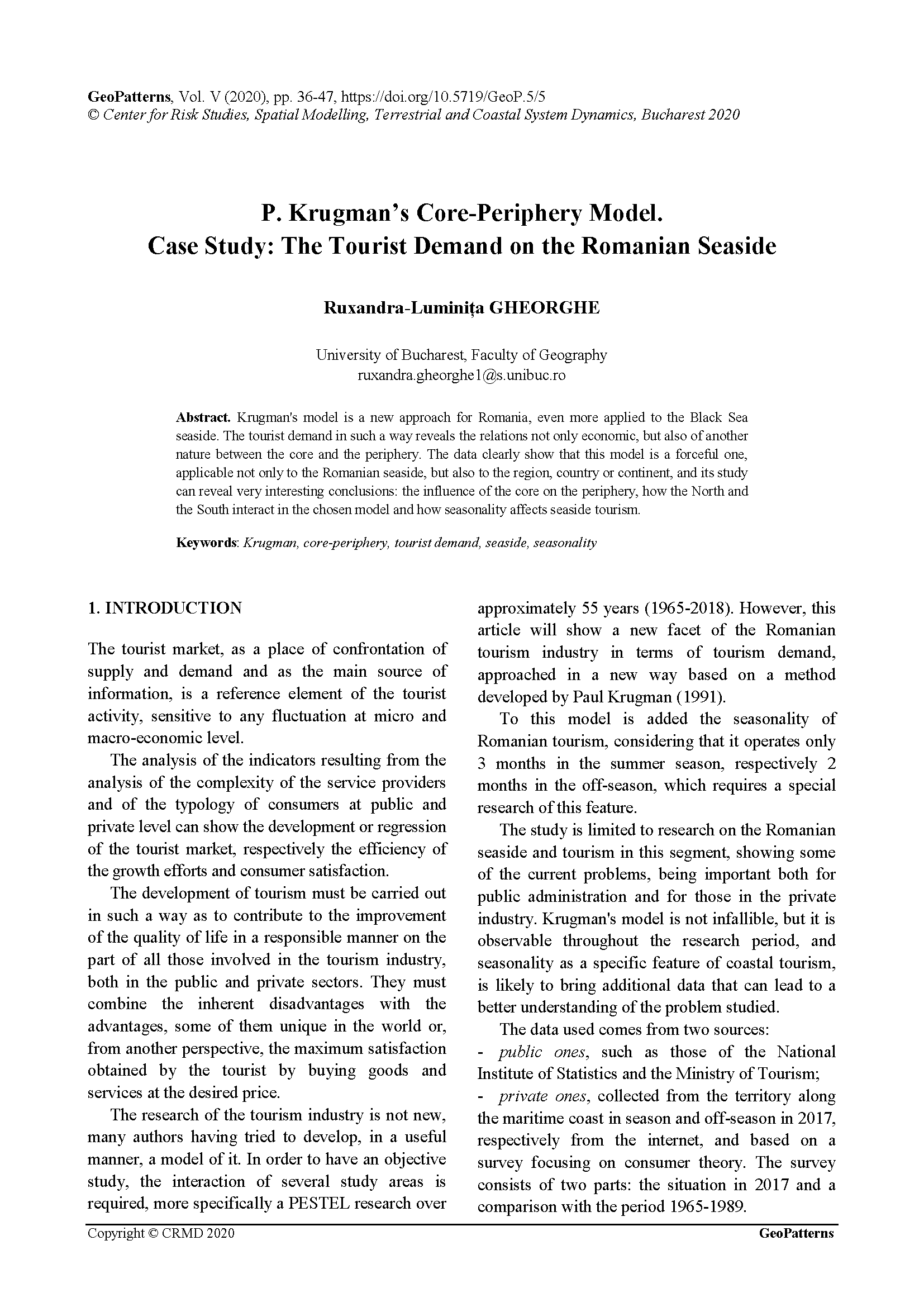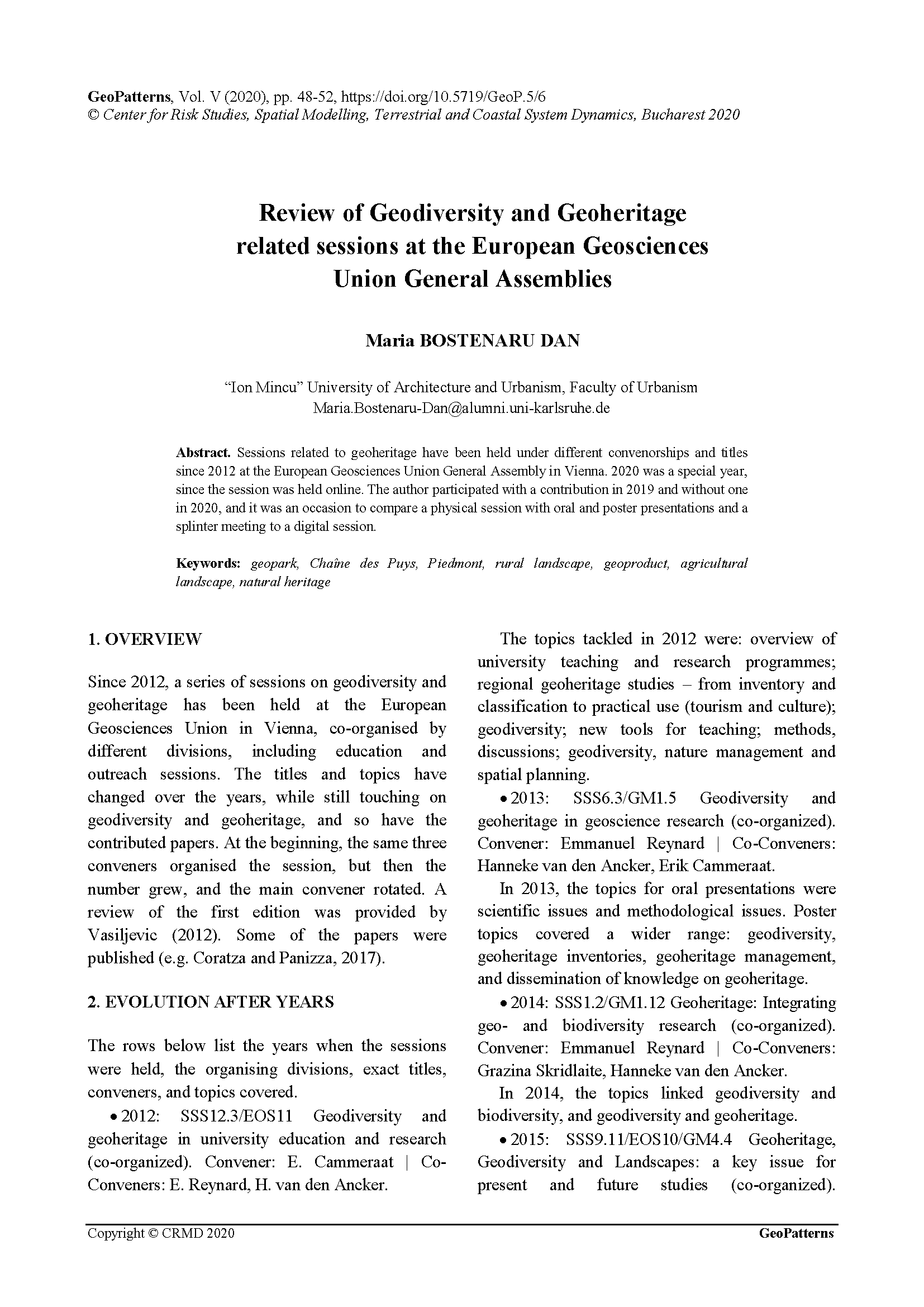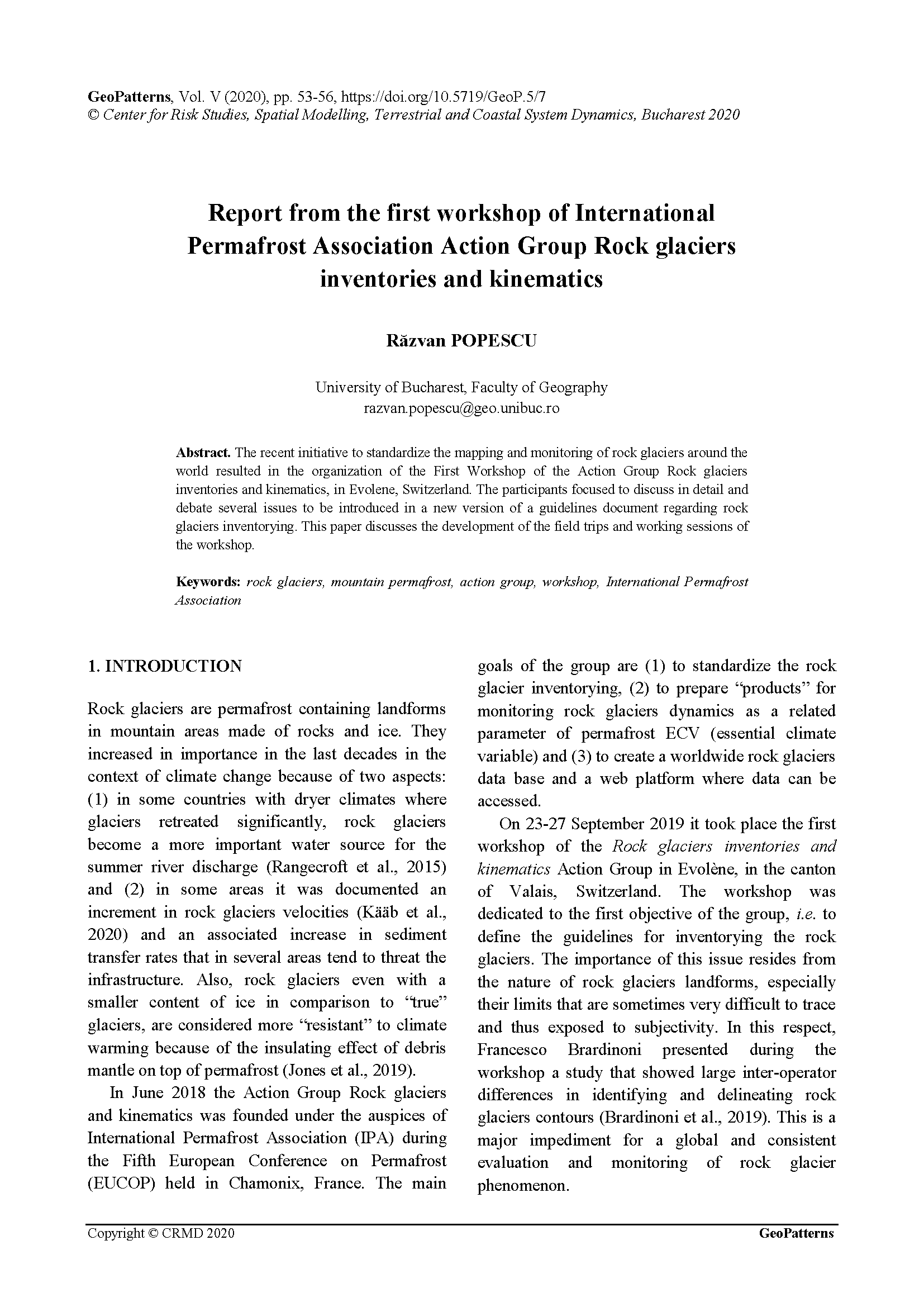About the Journal
GeoPatterns was founded in 2016 and it is supported and promoted by the the Center for Risk Studies, Spatial Modelling, Terrestrial and Coastal System Dynamics, Department of Geomorphology, Faculty of Geography, University of Bucharest. GeoPatterns publishes mainly original, high quality, peer-reviewed (DOI-assigned) research papers in all fields of spatially integrated geosciences and humanities, as well as reviews, research notes, and reports. The aim of GeoPatterns is to build a framework for the holistic understanding of our planet and its natural and social environments, by identifying the patterns that sustain the world.
All scientific papers accepted for publication are thoroughly analysed by a scientific committee formed by Romanian and foreign university professors, internationally recognized in their area of expertise.
GeoPatterns’s topics coverage makes the journal essential reading for geographers, as well as for researchers from other disciplines, such as disaster management, ecology, geology, sociology, psychology, anthropology (links nature and culture), environmental studies, urban planning, and cultural studies. The main language of the journal is English.
GeoPatterns is an open access journal and the content of the journal is freely available immediately upon publication.
Current Issue
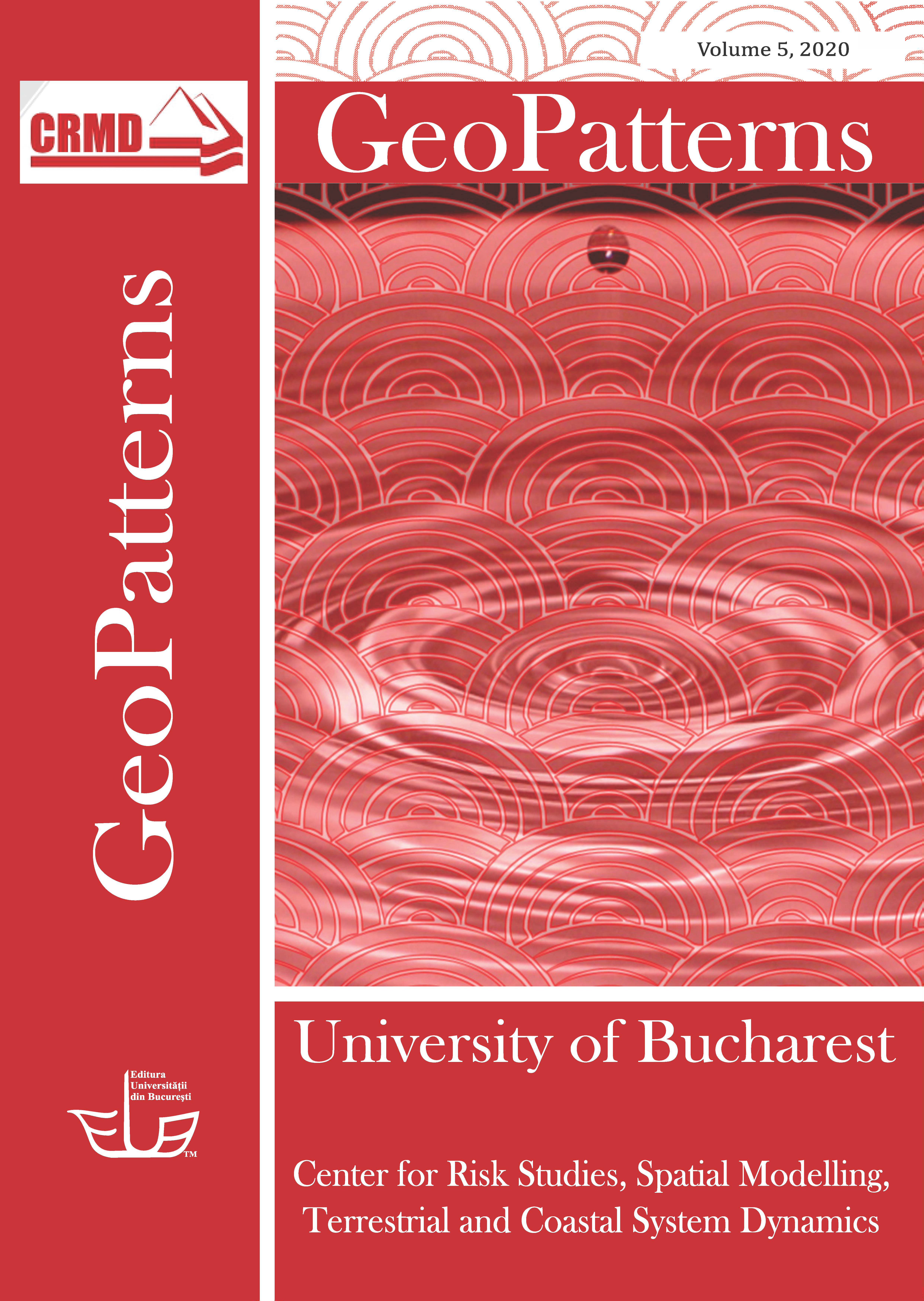
GeoPatterns’s topics coverage makes the journal essential reading for geographers, as well as for researchers from other disciplines, such as disaster management, ecology, geology, sociology, psychology, anthropology (links nature and culture), environmental studies, urban planning, and cultural studies. The main language of the journal is English.

